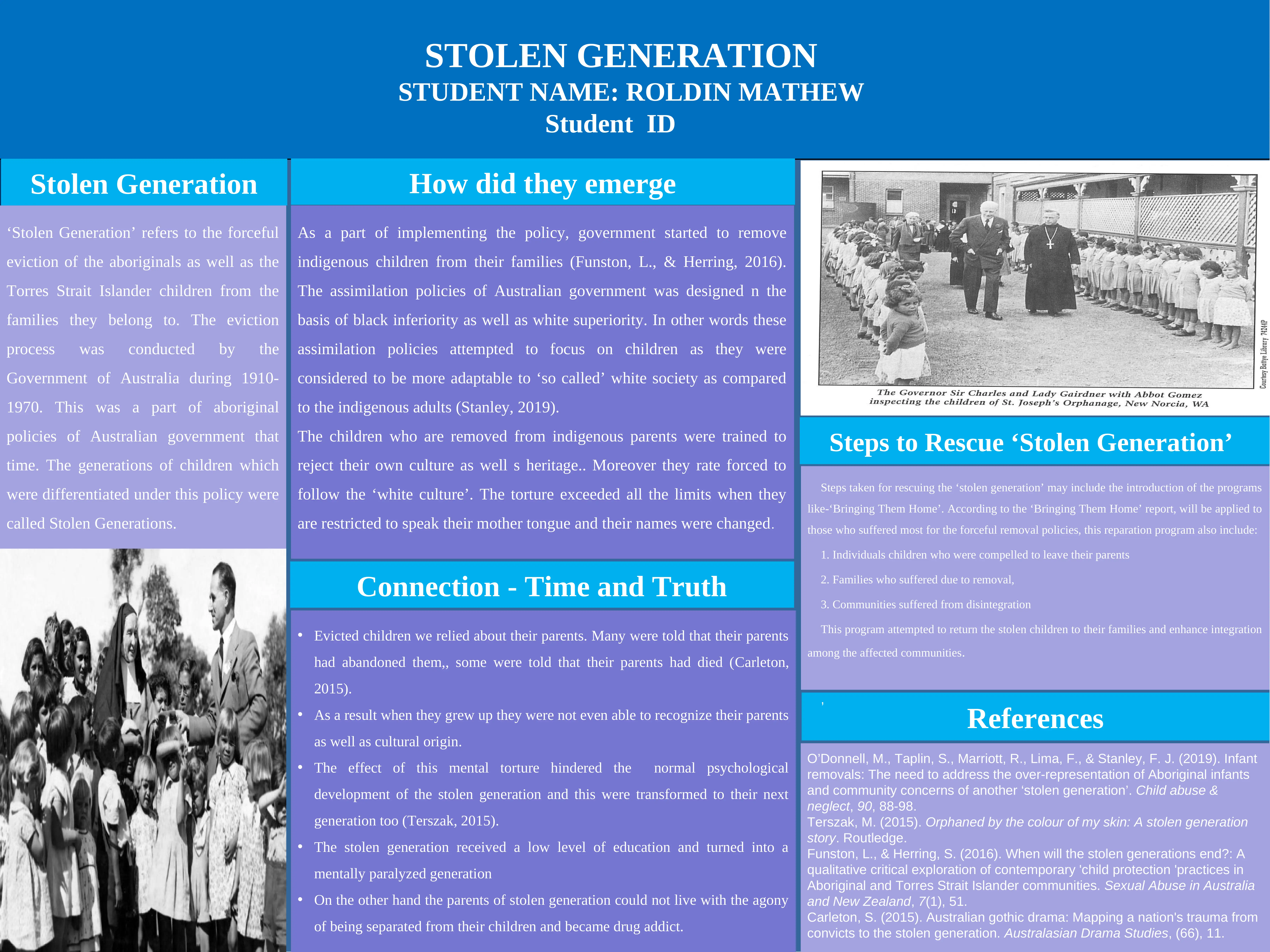BA1001 - Stolen Generation: Impact of Policies and Rescue Efforts
VerifiedAdded on 2023/03/23
|1
|633
|78
Essay
AI Summary
This essay provides an overview of the Stolen Generation, referring to the forceful removal of Aboriginal and Torres Strait Islander children from their families by the Australian government between 1910 and 1970. It discusses the assimilation policies that underpinned these actions, based on notions of racial inferiority and the belief that children were more adaptable to white society. The essay highlights the cultural and psychological impact on the stolen children, including the suppression of their native languages and cultural practices, and the resulting intergenerational trauma. Furthermore, it outlines rescue efforts and reparation programs like 'Bringing Them Home,' aimed at reconnecting stolen children with their families and communities, and addressing the lasting effects of these policies. The essay also touches upon the mental and emotional struggles faced by both the children and their parents due to this forced separation.






![[object Object]](/_next/static/media/star-bottom.7253800d.svg)